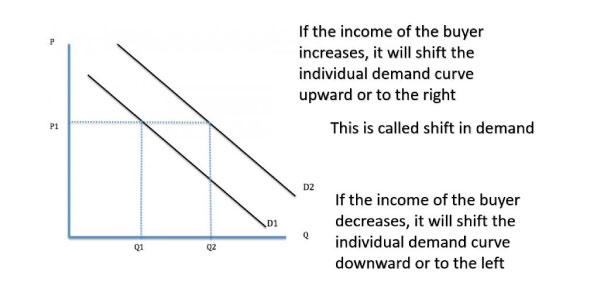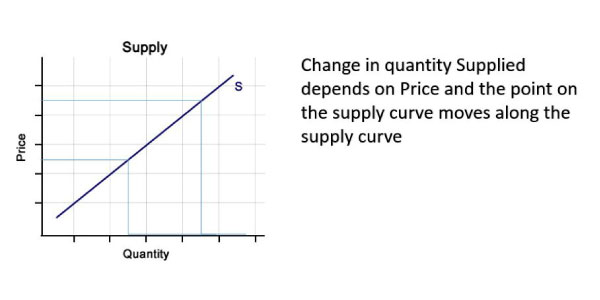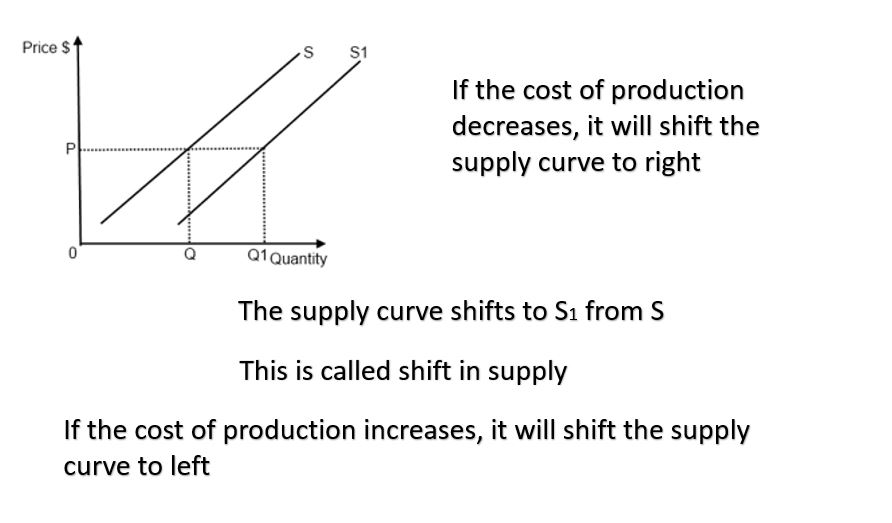In this post, we also going to discuss what is the difference between the change in quantity demanded or supplied and a change in demand or supply. But at first. It’s important to know what is demand and supply in Microeconomics. If you don’t know read about it from here “what is demand and supply in Microeconomics?” Before going to demand and supply function I want to tell you these two words substitutes and complement.

Substitutes:
Substitutes are those words in which an increase in the price of one increase is the demand of others. For example, you like coffee. But you prefer coffee or tea. If the price of coffee increases, you will switch to tea. Your consumption of coffee will decrease and consumption of tea will increase because you have a limited budget. And if you can’t afford drinking coffee every day. So, what happened increases in the price of coffee has increased the consumption or the demand for tea. Hence tea and coffee are called substitutes.
Demand and supply function
Complements:
Compliments are those good in reach in threes in the price of one, degrees is the demand of the other good. For example, Pen and Refill. Refill is a part of a pen. Now if the price of Refill increases you will consume less and less of Refill, because of a limited budget. But on the other hand, you will also have to reduce the consumption of pen because a refill is a part of a pen. So, what happened here. Increase in the price of that refill has reduced the demand for the pen. These types of goods are called complements.
Demands Function:

Demand is a function which depends on factors we see in the Demand Function. For example, the price which is the most important factor, the income of a person based on preferences of a person. What are the substitutes of good and what are the complements of their good? We will discuss now what is the difference between quantity demanded and changing demand. But before that I want you to discuss another word which is ceteris paribus. Which means all other things being unchanged or constant. For example, if I want to see that effect of price on demand, I will assume other factors will be constant. For example, I want to see the effect of income on demand. I will assume all of the factors except income to be constant.
Quantity demand:

You can see the demand curve which is downward sloping on X. We have quantity on Y. We have a price now. If the price is higher you will consume less quantity of that particular goods. And if the price is lower you will consume a high quantity of that particular goods. But one thing you should note here the quantity deciding point always moves along the demand curve. You just have to decide the price.
The quantity will be automatically decided by the demand curve. The quantity deciding point always moves along the demand curve. If we assume other things to be constant or ceteris paribus. We assume that the demand depends only on prices keeping other factors constant and change in quantity demanded. We have discussed the first point what is the quantity demanded. Change in quantity demanded Depends on the price and the point on demand curve moves along the demand curve. The quantity deciding point moves along the demand curve but the demand curve does not shift. This is the one they demanded.
Changing demand:
If there are changes in demand due to other factors then price then what to do. What if the income of the buyer increases or decreases then what will happen to their demand. Let us see the figure below.

The demand curve will shift its position. Why? Because your income has increased now at the same price point you are able to buy more quantity than before. These in threes increase in quantity is not justified by the price. Price is at the initial point only. But still, the quantity has increased because your income has increased.
If the income of a person increases, their demand curve will shift to the right or outward. On the other hand, if the income of a person decreases, the demand curve will change its position and shift to lift or in word. This is called a shift in demand. It’s a change in quantity demanded. But due to price in this, the demand curve does not shift. Here the price is the same. The demand curve shifts to outward because the income of the person has increased.
Supply Function:

Supply is a function of price obviously, cost of production, tax, and subsidies given by the government and like in supply and demand, there is a difference between quantity supplied and change in supply.

We can see here at lower prices the quantity supplied will below. We discuss the reason behind this in the previous post. In the figure, you can see that the quantity deciding point is always on the supply curve. It moves along the supply curve. But the supply does not shift.
Now, what if there are changes in supply due to factors other than price. Or for example what if the cost of production increases or decreases. If the cost of production increases or decreases the supply curve will shift. For example, we assume that the cost of production decreases.

Then it will shift the supply over to the right. Why? Because at the same price point now you are able to produce more or you are able to supply more. Hence the supply of shifts to right. The supply curve has shifted from S to S1. This is called a shift in supply. Now if the cost of production increases then it will shift to left. Because at the same price point you are not able to maintain your profit margin and you will reduce your quantity supplied.
The important point is that if the demand or supply is changing due to price then the momentum will be along with those demand or supply curve and a supply and demand curve will not change their position. But if the demand and supply are affected by factors other than price. Like income or cost of production then the demand and supply curve will change that position and shift to the right or left depending on in what direction the factors have changed.
In this post, we discuss the Demand and supply function. If you want to know what is demand and supply please read our previous post. What are demand and supply in Microeconomics?




I recommend to you to visit a site on which there is a lot of information on this question.